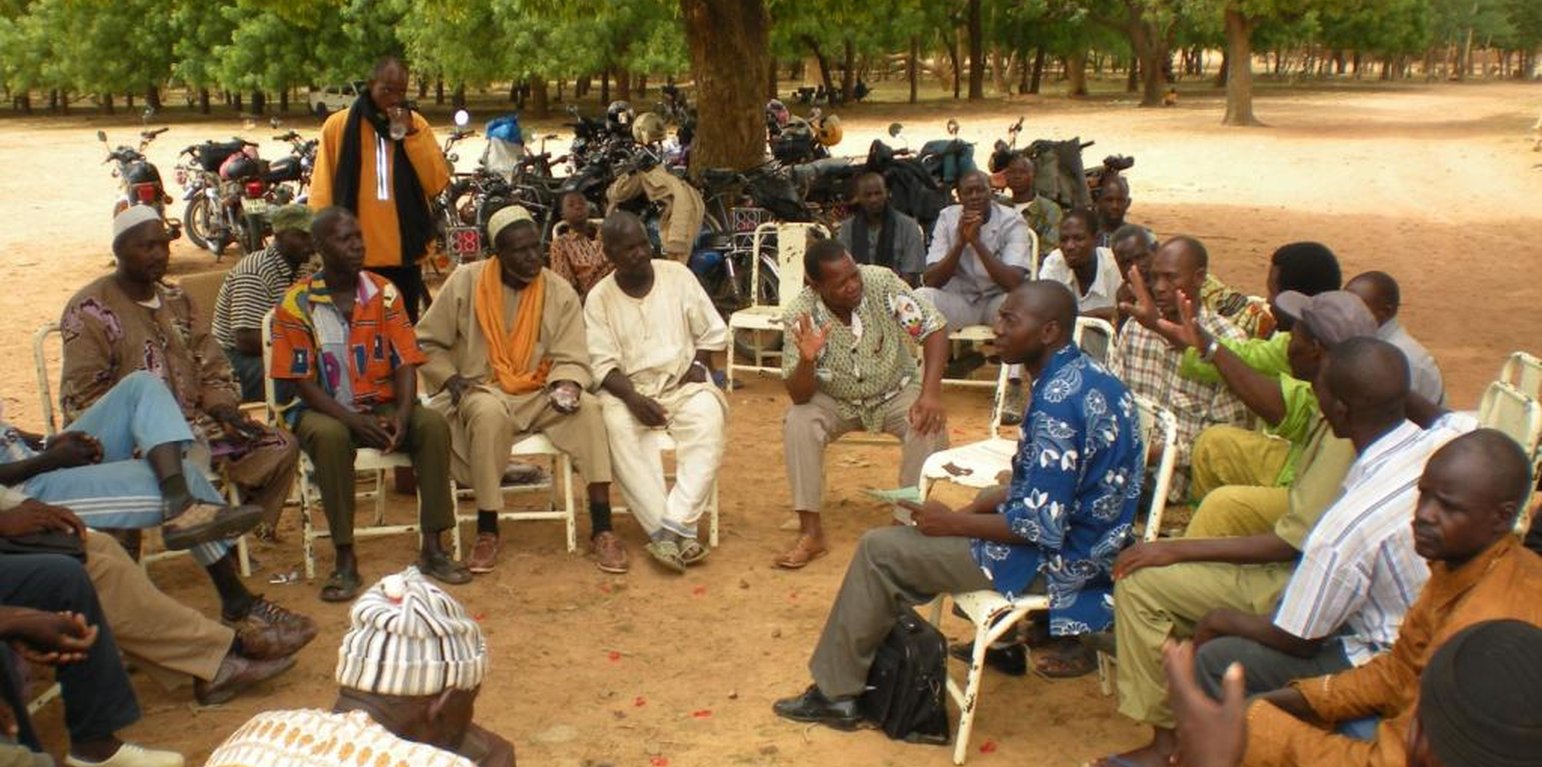



A local agreement is a mutual agreement covering the ways in which shared natural resources are exploited in order to ensure their fair and sustainable use. As the national methodological guide puts it: ‘All agreements, written or otherwise, between two or more local actors and particularly social groups (socio-professional groups, village associations or communities, or factions), technical services and NGOs set the rules for accessing and using the resources in a way which ensures their conservation and their responsible and sustainable exploitation’.
The local agreement is the fruit of a series of consultation and negotiation forums involving local farmers and managers of a shared natural resource and is delivered with the support of local authorities and their technical services. These consultation and negotiation forums make it possible for all the actors involved to evaluate the status of the resource, identify problems and put forward possible solutions. The forums create a climate of trust among user groups who, despite the difficulties of living side-by-side, remain willing to come together around the same table. The management ideas resulting from the discussions and negotiations are laid down in the form of consensual management rules, collectively called the ‘local agreement’.
Stages of implementation: 1)Information and identification of key actors in the process of drawing up a local agreement. As it is not possible for everyone to participate in the consultation exercise, the process is based on delegation. 2)Natural resource diagnostic exercise: first taking a snapshot of the current state of the resource using tools like resource maps, Venn diagrams and matrices categorizing producers by product. Next, problems arising from resource exploitation and management, and possible solutions to these problems, are identified. 3)The results are fed back to actors who have not been involved in the diagnostic process in order to gather their inputs. 4)Drawing up the draft local agreement: analysing reaction to the diagnostic feedback in order to (i) take on board the most relevant inputs and (ii) flesh out and refine the ideas for regulatory solutions (concrete management rules and their associated sanctions – this constitutes the ‘draft local agreement’) without losing sight of the national legislation relating to the resource. It is during this stage that the mechanism for monitoring the implementation of the agreement is developed. 5)Feedback and validation of the draft: in order to refine the terms of the draft local agreement, the select committee instituted by all those participating in the process feeds back the results of its work and then debates them. Once the terms are agreed by all parties, it is considered validated. 6)The draft local agreement is signed by the local managers of the resource and is then considered by the territorial community and approved by the supervisory authority, where required. Hardcopies of the signed agreement are subsequently given out to key actors and it is disseminated through discussions in general meetings and on local radio. 7)Monitoring bodies are set up to monitor local agreement implementation at the village and commune levels and to deliver training on the roles and responsibilities required at these levels. 8)Monitoring and evaluation is carried out with regard to the implementation of the local agreement and the functioning of bodies tasked with monitoring the implementation.
Involved actors: Territorial communities, farmers and managers of natural resources, technical services, financial support structure.
地点: Sikasso, Mopti, Koulikoro, Timbuktu , Mali, 马里
启动日期: 2004
终止年份: 不适用
方法的类型| 该方法涉及哪些利益相关者/执行机构? | 指定利益相关者 | 说明利益相关者的角色 |
| 当地土地使用者/当地社区 | ||
| SLM专家/农业顾问 | ||
| 国家政府(规划者、决策者) | ||
| 国际组织 |
决策是由......做出的
决策是基于
All agreements, written or otherwise, between two or more local actors and particularly social groups (socio-professional groups, village associations or communities, or factions), technical services and NGOs set the rules for accessing and using the resources in a way which ensures their conservation and their responsible and sustainable exploitation.
The consultation and negotiation forums make it possible for all the actors involved to evaluate the status of the resource, identify problems and put forward possible solutions.
Implementation locations: Sikasso, Mopti, Koulikoro, Timbuktu and others. A local agreement for managing natural resources usually applies for between three to five years. At the end of this period, the agreement must be evaluated in order to take account of new developments. PACT has been using these local agreements since 2004.
A local agreement for managing natural resources usually applies for between three to five years. At the end of this period, the agreement must be evaluated in order to take account of new developments. PACT has been using these local agreements since 2004. The sustainability of the local agreement depends on the level to which its terms are taken up by those who developed it and who are responsible for implementing it. It also depends on the relevance of the regulatory and technical solutions taken forward for resolving the major issues identified in the diagnostic process.